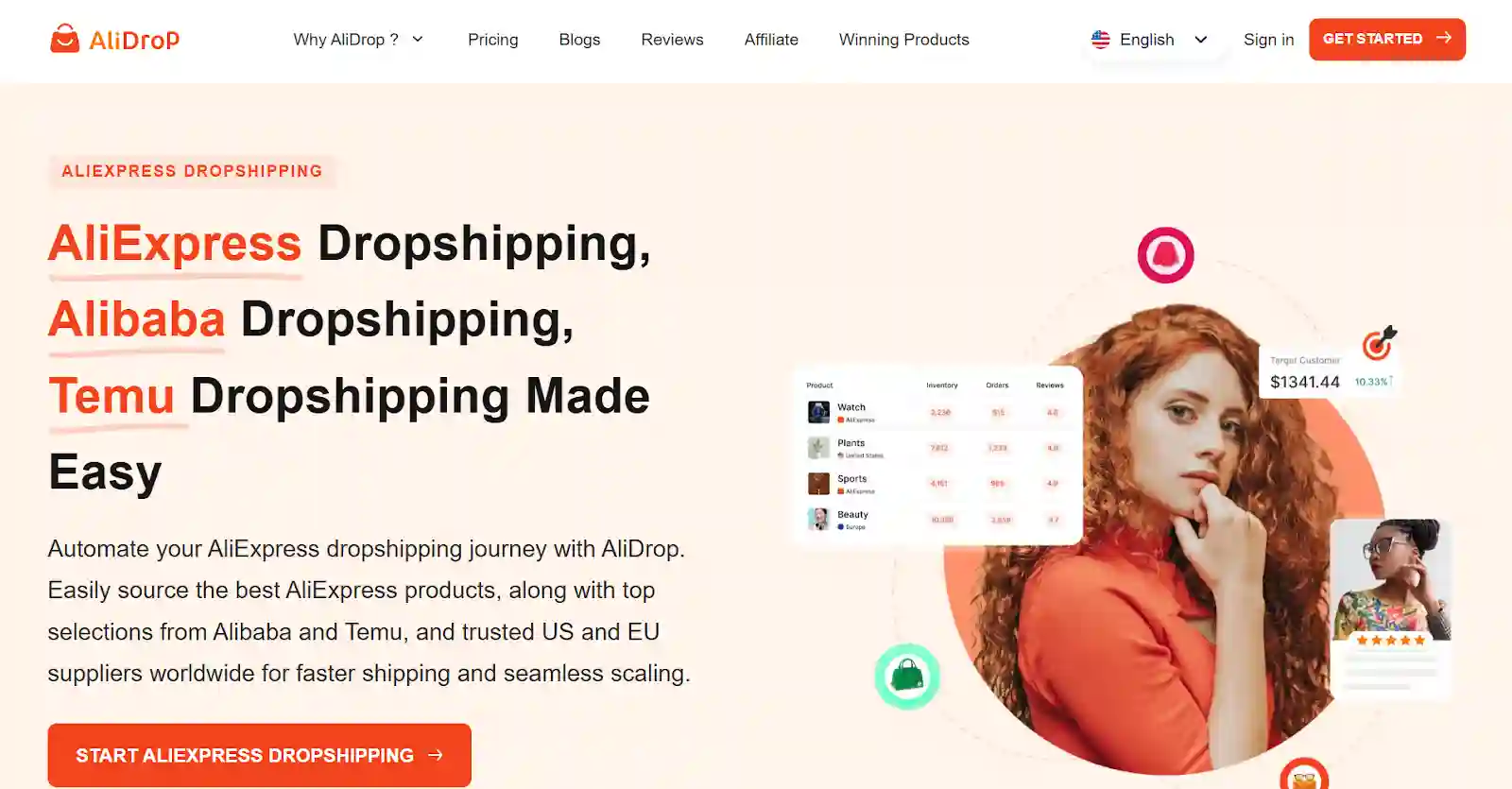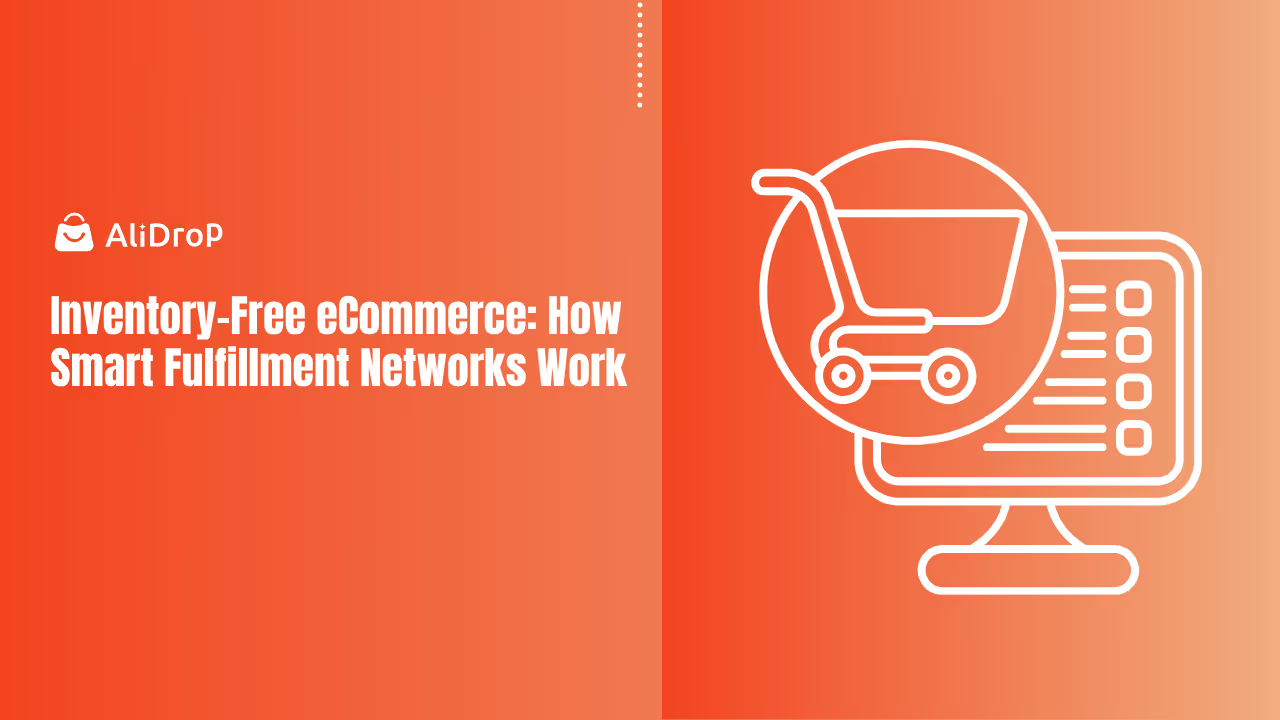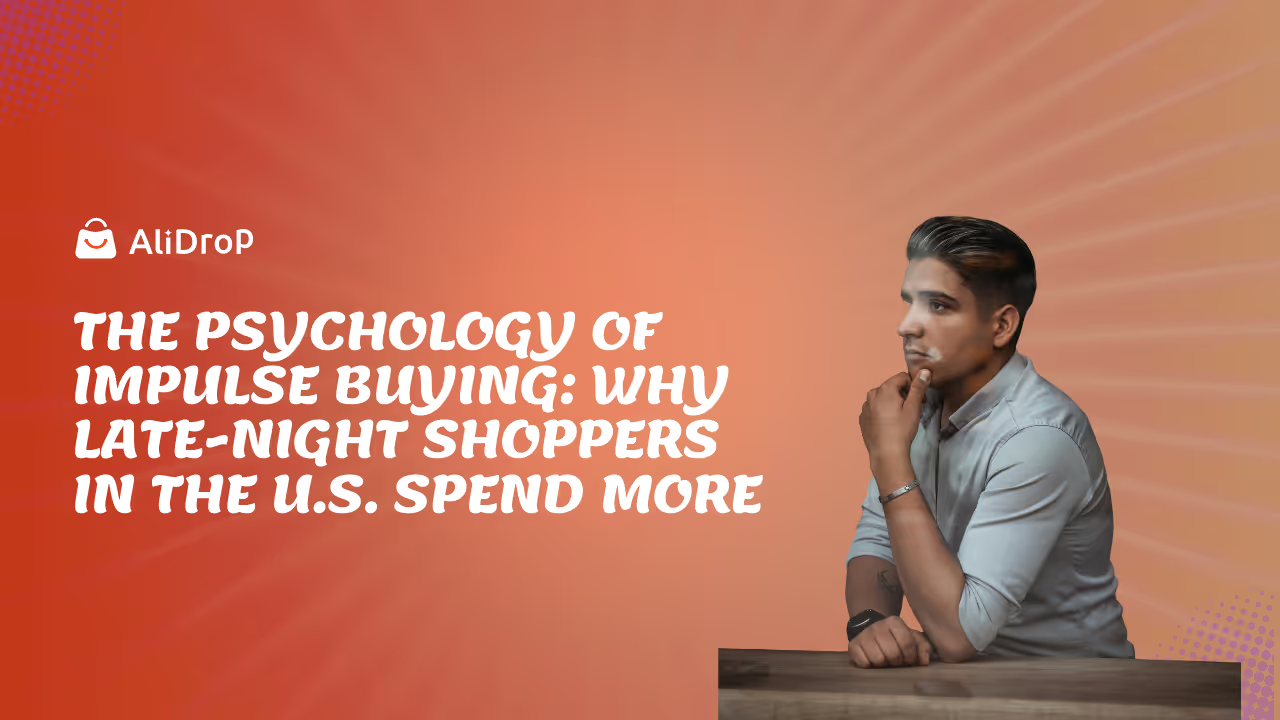You don’t need a warehouse, stacked shelves, or a room filled with cardboard boxes to run a real online business anymore. Today, inventory-free eCommerce is giving entrepreneurs the freedom to launch brands without purchasing products upfront or worrying about storage, shipping, or unsold inventory. Instead of locking money into products that may never sell, you can connect with smart fulfillment networks that handle production, warehousing, or delivery only after a customer places an order.
This shift is changing the rules of online business. It removes the biggest risks, speeds up product testing, and allows almost anyone to start selling without heavy investment. Whether you want to build a lean side hustle or scale a full-time store, the model offers flexibility that traditional retail has never allowed.
Before we explore how these smart fulfillment networks work, let’s get clear on what inventory-free really means—and what most guides fail to explain.
What Inventory-Free Really Means Today
Most people assume inventory-free simply means dropshipping, but that is only one slice of a much wider system. The modern version blends virtual inventory, on-demand production, marketplace logistics, and distributed fulfillment. Before we explore how the network works, you need a clear understanding of the different paths this model can take and why some are more effective than others.
A Spectrum Of Models, Not A Single Method
Inventory-free is not a one-size-fits-all strategy. It adjusts to your product type, budget, and speed of execution. Some sellers rely on suppliers who ship on demand. Others plug into marketplace fulfillment networks. Many combine them to stay flexible while they scale and gather data on what customers actually buy.
This spectrum includes:
- Dropshipping with supplier-managed stock
- Print-on-demand or production-on-demand
- Fulfillment through marketplace networks
- Virtual inventory with hybrid routing
- Digital or non-physical product add-ons
The strength of this model is its adaptability. You are not locked into a single warehouse, contract, or method, which gives you room to evolve as your store grows.
When Going Inventory-Free Gives You An Advantage
This approach is ideal when you want to launch quickly, test offers, or expand your catalog without the financial weight of bulk stock. It works especially well for long-tail products, seasonal items, experimental niches, or early-stage stores where demand is uncertain.
A tool like Alidrop makes this testing phase even more efficient, allowing you to experiment with products without stocking inventory. You learn what sells before committing to a larger strategy, which saves time, capital, and stress.
Where This Approach Can Fall Short
There are trade-offs. Lead times can vary, packaging control may be limited, and supplier performance can differ from product to product. These challenges are manageable, but they influence how you design your fulfillment network and when you decide to shift toward hybrid models later.
Inside A Smart Fulfillment Network (Architecture You Can Copy)
Most blogs talk about inventory-free selling but never explain how the system actually works behind the curtain. A smart fulfillment network is basically a connected chain of suppliers, technology, and logistics partners that activate the moment a customer clicks “Buy.” When these moving parts synchronize, you can run a store without touching a single box.
How Orders Flow Through The System
Imagine a customer places an order in your store. Instead of forwarding it manually, your ecommerce platform instantly triggers the next step in the chain. The order passes through a central system, then flows to the best supplier or fulfillment node, which prepares and ships the product to the customer. No warehousing. No packing. No stock risk.
That flow generally looks like this:
Storefront → Order Management → Supplier or Fulfillment Node → Carrier → Customer
Simple on the outside, coordinated on the inside.
The Role Of Multi-Node Fulfillment
Smart networks are not limited to one warehouse or one supplier. Orders can be routed to different locations based on region, cost, and delivery speed. You don’t own these nodes — you simply plug into them.
This approach can reduce shipping time, lower delivery costs, and unlock new regions without any physical expansion. It’s the same strategy global retailers use, minus the overhead.
What Intelligent Routing Actually Decides
When an order comes in, the system evaluates more than just “Who has the product?” It compares delivery times, cut-off windows, carrier reliability, and even current fulfillment load. Then it automatically selects the best path.
This is how smaller brands compete with faster shipping expectations, without holding stock.
Predictive Inventory Placement And Virtual Inventory (The AI Advantage)
The biggest weakness of traditional inventory-free selling has always been delivery speed. Smart networks are changing that through predictive placement and virtual inventory. Instead of waiting for an order and reacting, the system anticipates demand and positions products or production capacity closer to the customer before the order even happens. This is where inventory-free models start to feel as fast as brands that stock bulk inventory.
How Predictive Placement Reduces Delays
Predictive placement uses signals like past sales, regional browsing behavior, seasonal demand, and marketing calendars to forecast where orders are likely to come from. The network then shifts stock, capacity, or material inputs to the right region in advance.
The result is simple: less distance to travel, faster delivery, fewer shipping surprises, and fewer lost sales due to slow timelines.
The Role Of Virtual Inventory In Faster Fulfillment
Virtual inventory is not physical stock sitting in your warehouse. It is a digital representation of products available through suppliers, on-demand partners, or multiple fulfillment nodes. You can list more products without buying them first and route each order to the best node based on timing and cost.
This lets you offer a bigger catalog, test new products quickly, and avoid the financial trap of bulk inventory.
Why These Two Concepts Work Best Together
Predictive placement tells you where demand will come from.
Virtual inventory gives you the flexibility to fulfill it without owning stock.
Combined, they turn a reactive model into a proactive engine that protects margins and improves customer experience. This is the turning point where inventory-free stops being a beginner shortcut and becomes a scalable strategy.
Decision Math: When To Stay Inventory-Free And When To Hold Stock
Not every product deserves the same fulfillment approach. Some items perform beautifully in an inventory-free model. Others become cheaper, faster, and more consistent when you stock a small quantity. Instead of guessing, you can use a simple decision framework to choose the right path for each SKU and avoid costly mistakes.
A Simple Way To Judge Each Product
Before committing to any method, evaluate products on three signals: demand stability, margin, and delivery expectation. If demand is unpredictable, margins are slim, or customers are willing to wait longer, inventory-free works well. If demand is consistent and fast delivery directly impacts conversions, stocking a controlled amount can outperform any virtual setup.
This is the balance most brands miss. It’s not inventory-free versus inventory-heavy. It’s product-by-product optimization.
How To Calculate A Break-Even Point
A basic comparison is enough. Stack your total cost per order in both models — including shipping distance, supplier cost, storage fees, working capital, and return rates. When the cost of being virtual exceeds the cost of stocking, it’s a sign that a hybrid model will make more sense for that SKU.
This lets you scale with intention instead of copying what others do and hoping for the best.
When Inventory-Free Is Clearly The Right Choice

Choose the inventory-free route when you are testing products, validating demand, expanding into new regions, or experimenting with seasonal and trend-driven items. Tools like Alidrop are perfect for this phase, because you can test widely without locking up cash. Once a product becomes predictable, you can switch to a hybrid model if it improves speed and margins.
Marketplace Networks vs Independent Fulfillment Networks
As you scale, you’ll reach a fork in the road: rely on marketplace fulfillment programs or connect with independent 3PL networks. Both can support an inventory-free or hybrid strategy, but they work very differently. Understanding the trade-offs now will save you from slow deliveries, shrinking margins, or operational headaches later.
When Marketplace Fulfillment Works In Your Favor
Marketplace programs like FBA or similar platforms are built for speed, reach, and convenience. They shine when your customers are already buying on those marketplaces and expect fast, reliable delivery. These networks handle storage, picking, packing, and shipping, while offering perks like delivery badges or accelerated shipping lanes that can boost conversions.
The drawback is control. You follow their rules for packaging, returns, and fees. It’s great for volume and visibility, but limiting for customization or branded experiences.
Why Independent Networks Give You More Control
Independent 3PL networks operate across multiple regions and carriers without locking you into one platform. You can negotiate terms, customize packaging, and route orders however you want. This freedom is especially valuable when running a brand-focused store where experience matters as much as delivery speed.
The trade-off is management. You are responsible for selecting partners, monitoring service levels, and deciding which node ships what. It’s more work, but more branding power.
The Hybrid Model Most Successful Brands End Up Using
The smartest path is often a mix. Use marketplace fulfillment for fast-moving SKUs in marketplace channels, and use independent networks for your own store where branding, margins, and customization matter more. This combination gives you reach, speed, and flexibility without sacrificing identity.
Inventory-free sellers often start with marketplace or supplier-based fulfillment, then layer in a 3PL network as the brand matures. It’s a natural evolution that keeps risk low while unlocking scale.
Tooling That Makes Inventory-Free Operations Actually Work
A smart fulfillment setup isn’t held together by suppliers alone. The real engine is the software that connects your store, routes orders, updates tracking, and keeps customers informed. With the right tools, you can automate 80% of the work and avoid the delays, errors, and manual chaos that break most beginner operations. Before building your network, it’s important to understand which systems you truly need and how they work together.
The Non-Negotiable Parts Of Your Tech Stack
Your store needs a clear chain of communication from checkout to delivery. At minimum, that chain should include:
- An ecommerce storefront to capture the order
- An order management layer to route and sync data
- A fulfillment or supplier connection to process the product
- A shipping and tracking layer for delivery updates
If any piece is missing, customers feel it — either through late deliveries, missing tracking, or inconsistent communication.
Why Data Visibility Matters More Than Features
Most sellers obsess over features, but visibility is what keeps inventory-free systems stable. You need to see where an order is, how long it has been there, and what is slowing it down. Without visibility, every delay becomes a mystery and every customer issue becomes reactive panic.
A clear dashboard with shipment status, supplier performance, and carrier timelines gives you control even when you don’t touch the product.
Connecting Tools To Outcomes, Not Just Tasks
Tools should not just automate actions — they should improve business outcomes. Faster routing, lower shipping costs, fewer support tickets, better delivery timing, and happier customers are the real metrics. If a tool doesn’t push those results forward, it’s noise, not infrastructure.
The goal is simple: create a system where orders move automatically, customers stay informed, and you only step in when something truly needs human attention.
Customer Experience As A Growth Lever
Fast shipping alone doesn’t build loyalty. What customers really want is certainty. If they know when their order will arrive, see clear updates, and have simple options in case something goes wrong, they trust the brand. That trust turns into repeat purchases, reviews, and word-of-mouth — all without increasing ad spend. In an inventory-free system, customer experience becomes your strongest competitive edge.
Designing Delivery Promises That Boost Conversions
When shoppers are comparing products, delivery expectations often decide the sale. Clear delivery windows, transparent timelines, and no-surprise checkout experiences can lift conversions more than most design tweaks. Even if you don’t offer same-day or next-day shipping, clarity beats speed. The more accurate your promise, the more likely the shopper is to commit.
Fixing The Most Common Post-Purchase Friction
Most customer dissatisfaction doesn’t come from slow shipping — it comes from uncertainty. A lack of tracking updates, unclear timelines, or hidden delays frustrate buyers. Inventory-free networks can avoid this by automating tracking messages, sending proactive delay alerts, and keeping the customer informed at every stage.
When communication stays ahead of frustration, support volume drops and customer satisfaction rises.
Making Returns A Strategic Advantage
Returns are part of ecommerce, whether you stock inventory or not. Instead of treating them as a burden, use them to increase trust. A simple returns flow, pre-approved options for common cases, and fast refunds can turn a negative moment into brand loyalty.
Customers remember how you act when something goes wrong more than when everything goes right.
Conclusion
Inventory-free ecommerce makes it possible to launch and scale without the weight of storage, bulk purchases, or operational overload. By combining virtual inventory, on-demand fulfillment, and smart routing, you stay flexible, test faster, and avoid the biggest risks that slow most sellers down.
The real advantage comes from intention. Start lean, validate products using tools like Alidrop, then refine your network as demand becomes predictable. With the right systems in place, you can offer speed, clarity, and a smooth customer experience without ever touching a warehouse.
FAQs About Inventory-Free eCommerce
Can I start an online store without holding inventory?
Yes, you can. Models such as dropshipping, print on demand, and marketplace fulfillment allow you to sell products without purchasing or storing them upfront.
What are the most common inventory-free business models?
The most popular methods include dropshipping, print on demand, marketplace fulfillment programs, digital products, and hybrid options that combine virtual inventory with on-demand production.
Is dropshipping the same as inventory-free eCommerce?
Not exactly. Dropshipping is one form of inventory-free selling, but the category also includes other models like print on demand, virtual warehousing, and marketplace fulfillment networks.
How fast can products ship if I don’t hold inventory?
Shipping speed depends on your supplier network, routing system, and carriers. With the right fulfillment partners, delivery times can be competitive, especially when orders are routed to the closest available node.
What is virtual inventory in eCommerce?
Virtual inventory is a digital catalog of products available through suppliers or multiple fulfillment nodes. It lets you sell a wider range of items without physically storing them, while still maintaining flexible shipping options.























